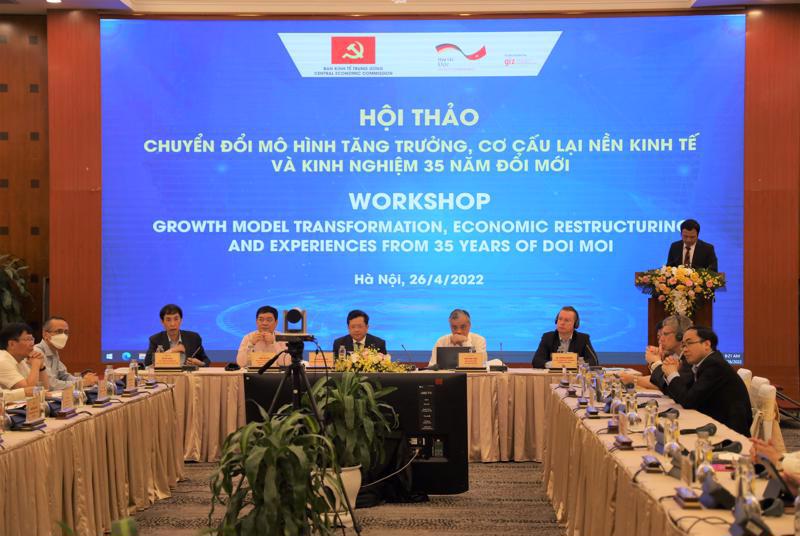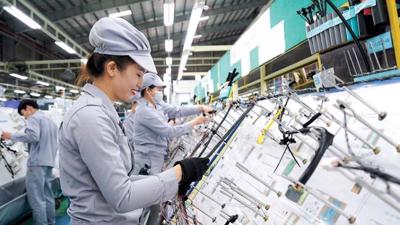Transformation of growth model in need of boost
Vietnam’s efforts in restructuring its growth model and economy need to be faster, workshop hears.

After 35 years of renovation, Vietnam’s shift to an in-depth growth model has been slower than required, as growth is still mainly based on input factors such as capital, labor, and natural resources, analysts told a workshop on growth model transformation and economic restructuring hosted by the Party Central Committee's Economic Commission and the German Agency for International Cooperation (GIZ) on June 26.
Vietnam therefore needs to accelerate its growth model transformation to catch up with the world.
The process of transforming the growth model and restructuring the economy has recorded important results, said Mr. Nguyen Duc Hien, Deputy Director of the Economic Commission. Growth has reached a sound level, and the growth model has been gradually directed towards combining breadth and depth. Key issues in restructuring the economy, including restructuring public investment, State-owned enterprises (SOEs), and credit institutions have seen initial positive results.
Nevertheless, obstacles are still visible in the transformation process. Public investment efficiency and the disbursement of public investment capital have not been impressive, especially ODA. The process of equitizing SOEs and State capital disbursement remain slow compared to planning, and corporate governance has not been improved.
According to Professor Tran Tho Dat, former Rector at the National Economics University, Vietnam should develop a framework strategy for digital transformation, create the basic conditions to attract capital for investment in the digitalization of the economy, support enterprises to innovate and improve techniques and production technology, and apply digital technology in all layers of the economic structure.
Dr. Jonathan Pincus, Senior Economic Advisor at the UNDP, said that to narrow the gap between Vietnam and developed countries, in addition to maintaining a much higher export-to-GDP ratio than elsewhere, Vietnam needs to resolve the problem of importing high-quality inputs for export products.
“Vietnam also needs to better transform, from strategy formulation to plan implementation, through reducing power fragmentation in the implementation process,” he recommended.







